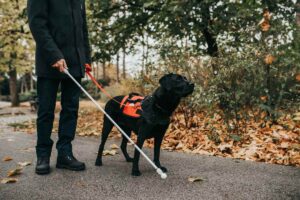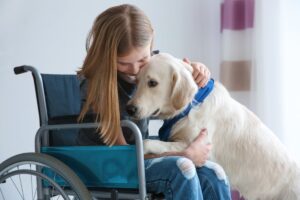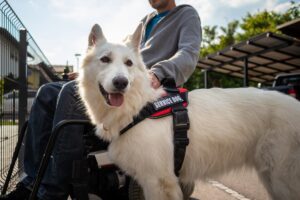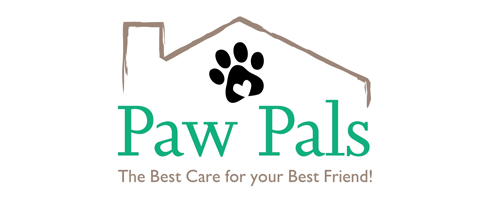Service dogs are truly extraordinary animals, trained to be lifesavers and companions for individuals with disabilities. These remarkable dogs undergo extensive and specialized training to provide essential assistance that enables their handlers to live safer, more independent lives. However, while their work is awe-inspiring, it’s equally important for those of us outside of their world to respect their role and understand the protocols that ensure they can do their job effectively.
Service dogs are not like typical pets; they are highly trained professionals responsible for tasks that directly impact the well-being of their handlers. Before we jump into the critical need for respecting service dogs and their work, let’s explore the different types of service dogs and the unique jobs they perform.
The Incredible Roles of Service Dogs
Service dogs come in many forms, each trained to perform specific tasks tailored to their handler’s needs. Though all service dogs share a common goal of helping their handlers, the skills they learn vary drastically depending on the handler’s specific disability or needs. Here are the primary roles that service dogs take on:
Guide Dogs
 Guide dogs act as the eyes for their handlers who are blind or visually impaired. Their work is essential for ensuring the handler navigates their environment safely. From avoiding obstacles on the sidewalk to guiding their handler through busy intersections, guide dogs provide independence and mobility to those who rely on them. These dogs must remain calm and focused at all times—even in loud or chaotic settings—to effectively steer their handler clear of potential hazards.
Guide dogs act as the eyes for their handlers who are blind or visually impaired. Their work is essential for ensuring the handler navigates their environment safely. From avoiding obstacles on the sidewalk to guiding their handler through busy intersections, guide dogs provide independence and mobility to those who rely on them. These dogs must remain calm and focused at all times—even in loud or chaotic settings—to effectively steer their handler clear of potential hazards.
Psychiatric Service Dogs
Psychiatric service dogs are trained to assist individuals who suffer from psychiatric conditions such as PTSD (Post-Traumatic Stress Disorder), anxiety disorders, or depression. Their primary goal is to help their handlers manage and cope with the symptoms of their mental health challenges. These dogs can:
- Interrupt panic attacks.
- Provide pressure therapy by applying gentle weight to calm their handlers.
- Retrieve medication.
- Act as a grounding presence during flashbacks or dissociative episodes.
Psychiatric service dogs are more than just emotional support—they are highly skilled in recognizing behaviors that could indicate distress and actively working to de-escalate these situations before they spiral out of control.
Medical Alert Dogs
Medical alert dogs are outstanding examples of the incredible capabilities of a dog’s senses. These dogs are trained to detect changes in their handler’s body chemistry and alert them to life-threatening medical conditions. For instance:
- A seizure alert dog can recognize subtle pre-seizure behaviors and alert the handler before a seizure occurs.
- A diabetic alert dog can sense fluctuations in blood sugar levels and notify the handler of impending hypoglycemia (low blood sugar) or hyperglycemia (high blood sugar).
Their job is not only to alert their handler but also to take additional action, such as fetching medication or alerting others to assist during emergencies.
Mobility Assistance Dogs
For individuals with physical disabilities or limited mobility, mobility assistance dogs serve as a helping hand—or paw, rather. These dogs:
- Help their handlers walk by providing stability.
- Retrieve dropped items, such as a phone or keys.
- Open doors, turn on lights, or even load laundry machines.
By supporting their handlers in everyday tasks, mobility assistance dogs significantly enhance their independence and quality of life.
The Serious Nature of a Service Dog’s Job
Service dogs are not simply “working animals”—they are lifelines for their handlers. Their job is essential, and distractions from others can severely hinder their ability to perform. When we see a dog, it’s natural to feel drawn to their cuteness, friendly eyes, or adorable demeanor. However, when that dog is in a service role, our interactions must change entirely.
Why You Shouldn’t Distract a Service Dog
 As tempting as it may be to greet, pet, or interact with a service dog, doing so can cause significant harm to both the dog and their handler. Here’s why distractions are so detrimental:
As tempting as it may be to greet, pet, or interact with a service dog, doing so can cause significant harm to both the dog and their handler. Here’s why distractions are so detrimental:
- Safety Risks: Service dogs are trained to remain focused on their handler’s needs. A single moment of distraction can prevent them from noticing a hazard or performing a critical task, putting their handler’s safety at risk.
- Interruption of Training: Even the most highly trained dogs can be affected by outside stimuli like petting, calling their name, or making eye contact. These are learned behaviors that can deteriorate if repeatedly distracted in public.
- Stress for the Handler: Handlers rely on their service dogs to live independently and navigate the world more easily.
- Knowing that their dog may be distracted by strangers can cause them additional stress and anxiety.
- Delayed Emergencies: If a medical alert dog is sidetracked, they might not detect an emergency condition as early as they otherwise would. In dire circumstances, every second matters.
When you see a service dog, it’s important to ignore the natural urge to treat them like a pet. Respecting their work means allowing them to perform without interference. Remember: they are there to serve their handler, not entertain bystanders.
How to Respectfully Interact Around Service Dogs
Understanding proper etiquette around service dogs is crucial, especially in public settings. These guidelines ensure that the dog and handler can go about their day without interruptions:
Do Not Pet or Touch the Dog
Even a light touch can divert the dog’s attention from their task. Always ask the handler’s permission before interacting with their dog, knowing that they likely will (and should) say no.
Avoid Talking to the Dog
Calling out or speaking to the dog—even just saying their name—can distract them from their task. Focus your conversation on the handler rather than their canine companion.
No Eye Contact
Making direct eye contact or attempting to stare at the dog can draw their attention away from their job. Avoid engaging with the dog at all and pretend that they’re invisible.
Teach Children About Service Dogs
Children are naturally curious, but they must learn that service dogs are not like pets at home. Teach them to admire service dogs from afar and never interfere with the dog or handler.
Do Not Offer Treats or Toys
Offering food or playing with the dog can break their focus and interfere with their work. This can be particularly dangerous for medical alert dogs or others who must remain hyper-aware.
By adhering to these guidelines, you show respect for the handler and their service dog’s important work.
The Social Responsibility of Pet Lovers
 As pet lovers, we have a unique role to play in raising awareness about the importance of service dogs and the jobs they perform. Encourage your friends, family, and community to learn about service dogs and their role in supporting individuals with disabilities. Use social media, local events, or conversations to spread this awareness and advocate for the respect and consideration these dogs deserve.
As pet lovers, we have a unique role to play in raising awareness about the importance of service dogs and the jobs they perform. Encourage your friends, family, and community to learn about service dogs and their role in supporting individuals with disabilities. Use social media, local events, or conversations to spread this awareness and advocate for the respect and consideration these dogs deserve.
Celebrate Service Dogs Every Day
Organizations and pet lovers worldwide work hard to support the incredible contributions of service dogs. Events like International Assistance Dog Week highlight the importance of service and therapy animals, encouraging appreciation for their life-changing work. But let’s not wait for a designated week—celebrate and respect service dogs every day.
By understanding the profound impact that guide dogs, psychiatric service dogs, medical alert dogs, and mobility assistance dogs have on their handlers, we learn to see these animals as the guardians they truly are. So, the next time you see a service dog, remember: respect them, appreciate them, but don’t distract them. Together, we can all do our part to ensure these incredible dogs can focus on the life-saving tasks they’re trained to perform.


